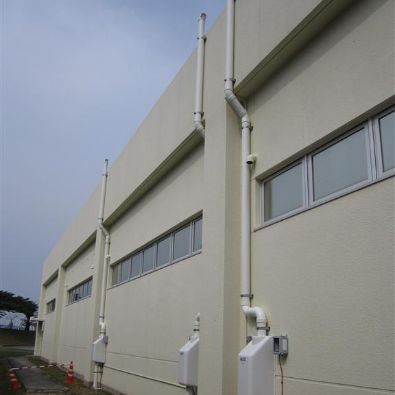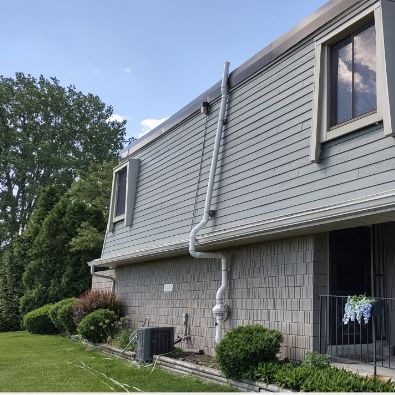Commercial Radon Mitigation
Free Quote Click Here!At All Iowa Radon we pride ourselves in customer satisfaction!
Call us today or fill out the form below for a FREE Quote!
319-231-3963
The Importance of Commercial Radon Mitigation in Grimes, Iowa
Radon is a naturally occurring, odorless, and colorless gas that can be found in the soil and rocks beneath our homes and businesses. It is the second leading cause of lung cancer in the United States and is a serious health hazard. In Grimes, Iowa, commercial radon mitigation is an important step in protecting the health of employees and customers.Radon is created when uranium in the soil breaks down and releases radioactive particles into the air. These particles can enter buildings through cracks in the foundation, gaps around pipes, and other openings. Once inside, the radon gas can accumulate and become a health hazard.At All Iowa Radon, we specialize in commercial radon mitigation. Our team of experienced professionals can identify the source of the radon and develop a plan to reduce the levels in your building. We use a variety of techniques, including sealing cracks and gaps, installing ventilation systems, and installing radon-reducing systems.Commercial radon mitigation is an important step in protecting the health of your employees and customers. Radon is a serious health hazard and can cause long-term health problems if left unchecked. By taking the necessary steps to reduce the levels of radon in your building, you can ensure that your employees and customers are safe and healthy.At All Iowa Radon, we are committed to providing the highest quality of service and the best possible results. Our team of experienced professionals will work with you to develop a plan that meets your needs and budget. We are dedicated to providing the best possible service and results for our clients.If you are looking for commercial radon mitigation in Grimes, Iowa, contact All Iowa Radon today. Our team of experienced professionals will work with you to develop a plan that meets your needs and budget. Protect the health of your employees and customers by taking the necessary steps to reduce the levels of radon in your building.


Call Now For A Free Commercial Radon Assessment 319-231-4024
Grimes, Iowa is a small city located in Polk County, Iowa. It is part of the Des Moines–West Des Moines Metropolitan Statistical Area. The population of Grimes was 8,246 as of the 2010 census. Grimes is a rapidly growing city, with a population increase of over 50% since 2000.
Grimes was founded in 1881 by James W. Grimes, a former Governor of Iowa. The city was named after him. Grimes is home to the world’s largest wind chime, which stands at over 30 feet tall. The wind chime was built in 2004 and is located in the city’s Central Park.
Grimes is home to the Iowa State Fairgrounds, which hosts the annual Iowa State Fair. The fairgrounds also host a variety of other events throughout the year, including concerts, car shows, and other festivals. The fairgrounds are also home to the Iowa State Fair Museum, which features exhibits on the history of the fair.
Grimes is home to the Grimes Public Library, which was established in 1883. The library is located in the historic Grimes Opera House, which was built in 1891. The library offers a variety of services, including books, magazines, newspapers, and audio-visual materials.
Grimes is also home to the Grimes Historical Museum, which is located in the former Grimes City Hall. The museum features exhibits on the history of Grimes and the surrounding area. The museum also hosts a variety of events throughout the year, including lectures, workshops, and other educational programs.
Grimes is home to a variety of businesses, including restaurants, retail stores, and professional services. The city is also home to a number of parks and recreational facilities, including a skate park, a disc golf course, and a swimming pool.



The History of Radon in Grimes, Iowa
Radon is a naturally occurring, colorless, odorless, and tasteless gas that is produced by the breakdown of uranium in soil, rock, and water. It is found in all parts of the world, including Grimes, Iowa. Radon is the second leading cause of lung cancer in the United States, and it is important to understand the history of radon in Grimes, Iowa in order to protect the health of its citizens.
In the early 1990s, the Iowa Department of Public Health began testing for radon in homes across the state. In Grimes, the first radon test was conducted in 1994. The results showed that the average indoor radon level was 4.2 picocuries per liter (pCi/L), which is above the Environmental Protection Agency’s (EPA) action level of 4.0 pCi/L. This prompted the city to take action to reduce radon levels in homes.
In 1995, the city of Grimes began offering free radon testing to all residents. The city also provided information about radon and how to reduce exposure. In addition, the city began offering radon mitigation services to homeowners who had high levels of radon in their homes. These services included sealing cracks and openings in the foundation, installing a radon mitigation system, and providing advice on how to reduce radon levels.
Since then, the city of Grimes has continued to monitor radon levels in homes and provide information and services to reduce exposure. In 2017, the average indoor radon level in Grimes was 3.2 pCi/L, which is below the EPA’s action level. This is a testament to the city’s commitment to protecting the health of its citizens.
The history of radon in Grimes, Iowa is an important one. The city has taken proactive steps to reduce radon levels in homes and protect the health of its citizens. By continuing to monitor radon levels and providing information and services to reduce exposure, the city of Grimes is helping to ensure the safety of its citizens.
Contact Us For A Free Quote!
Our team of experts is ready to provide you with personalized guidance and deliver exceptional results.
